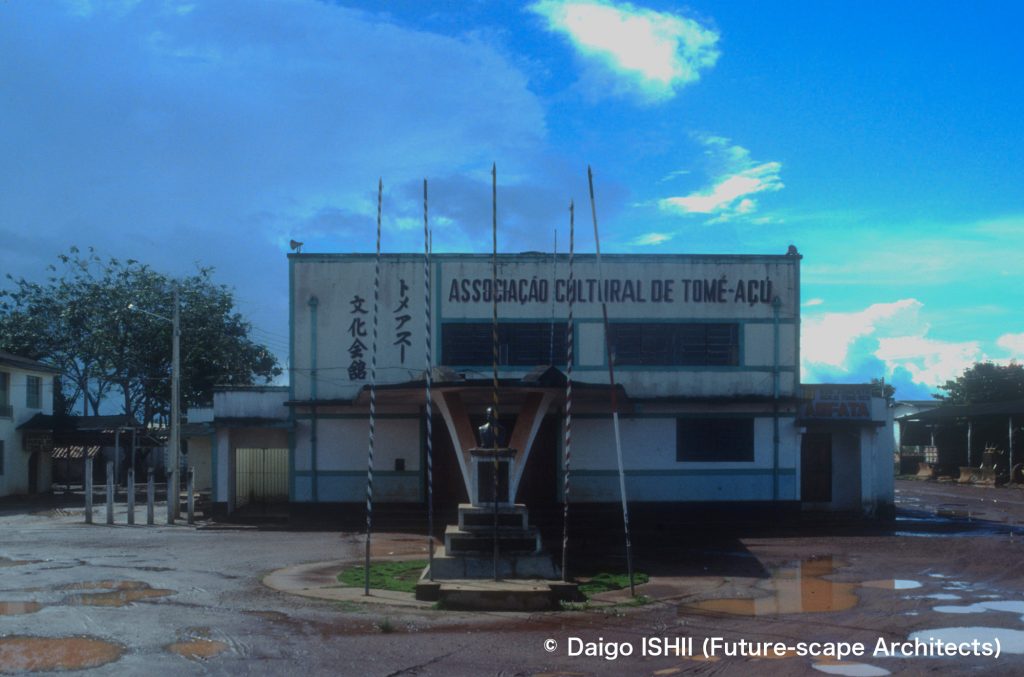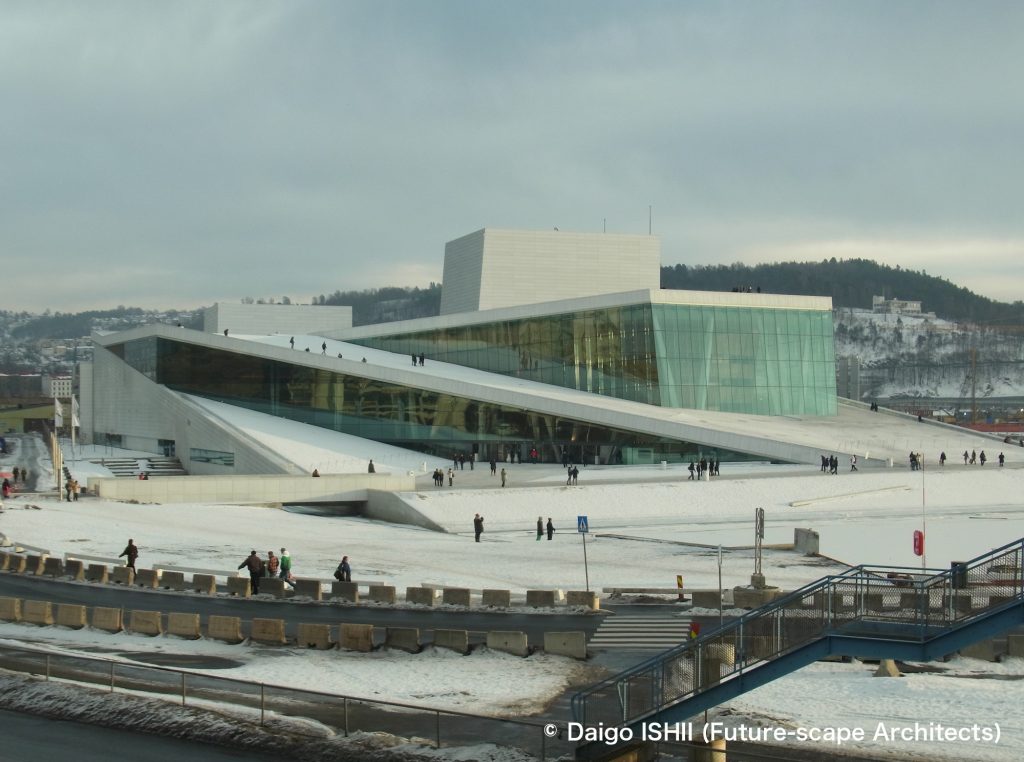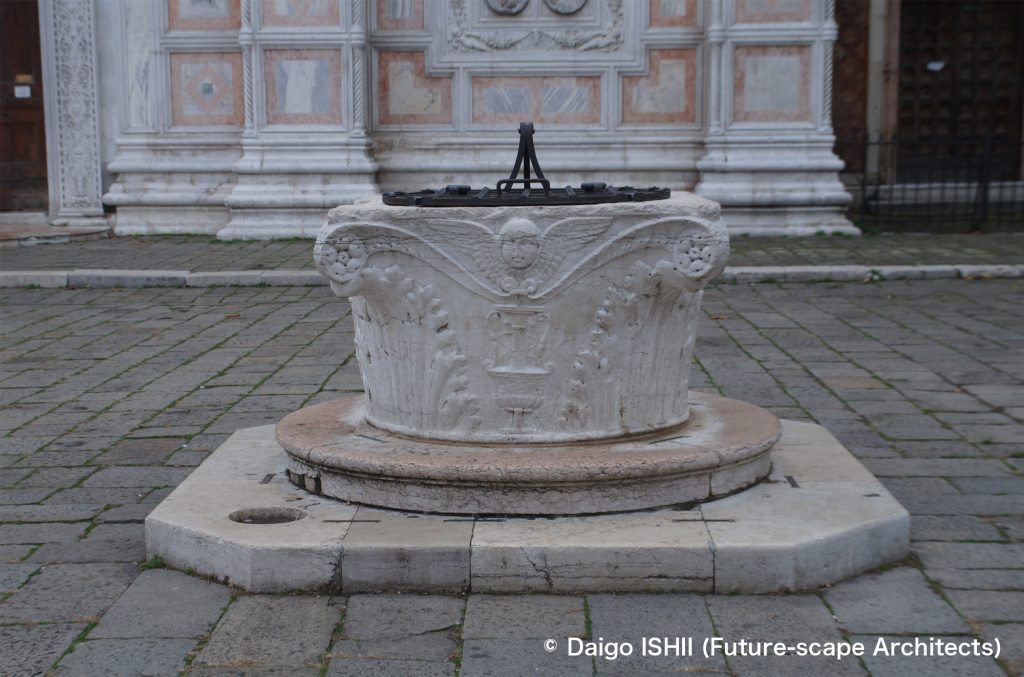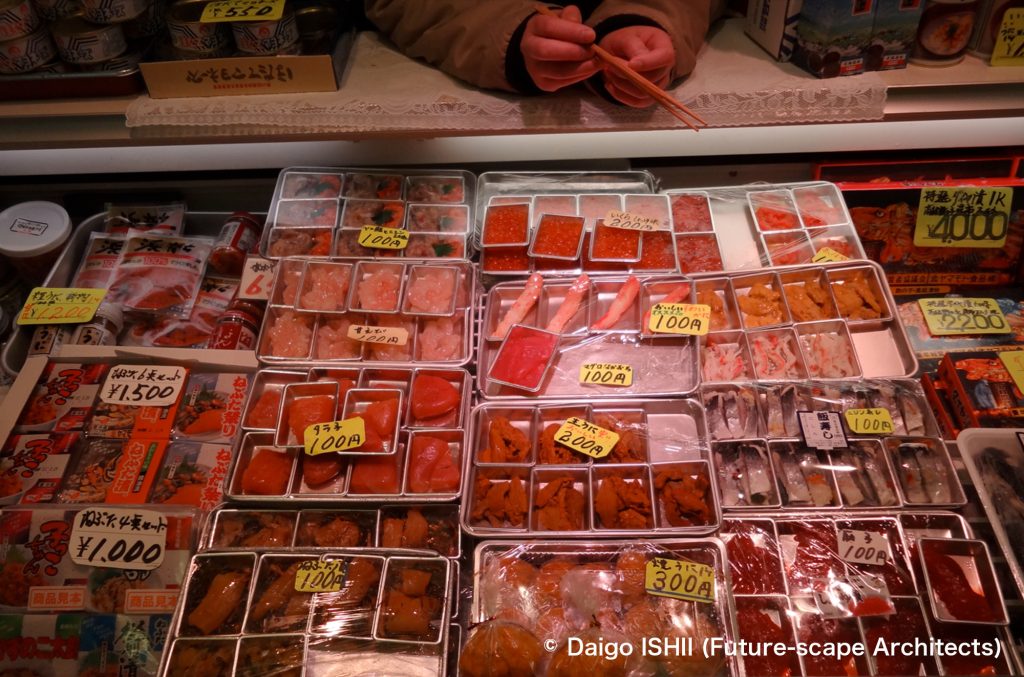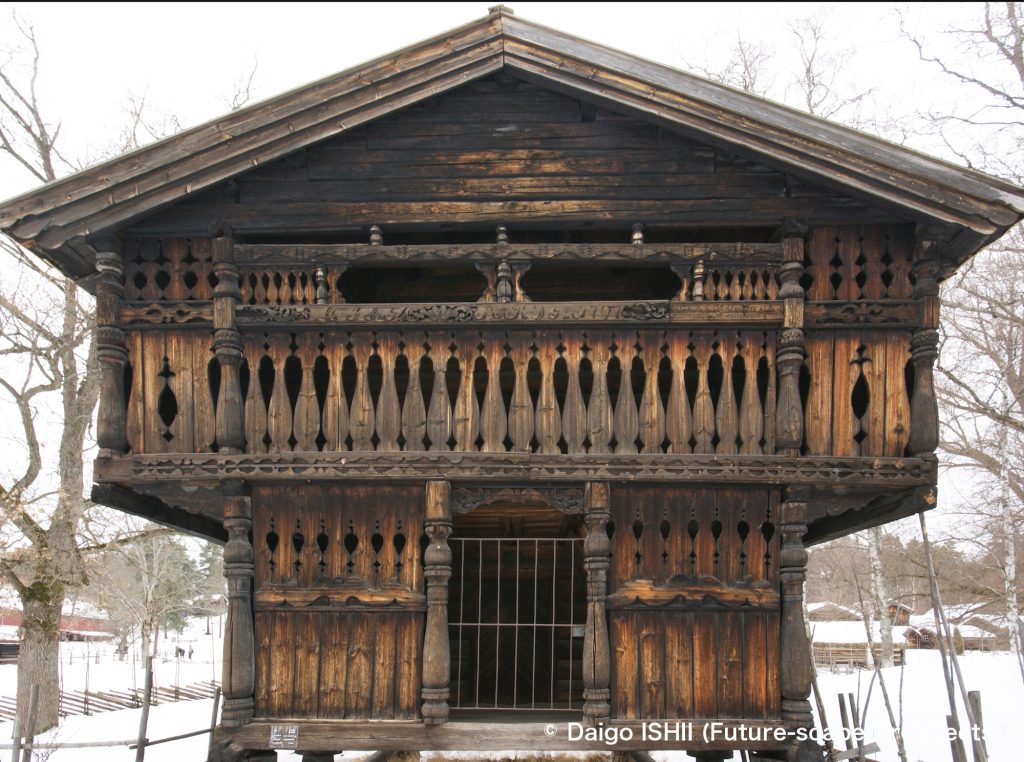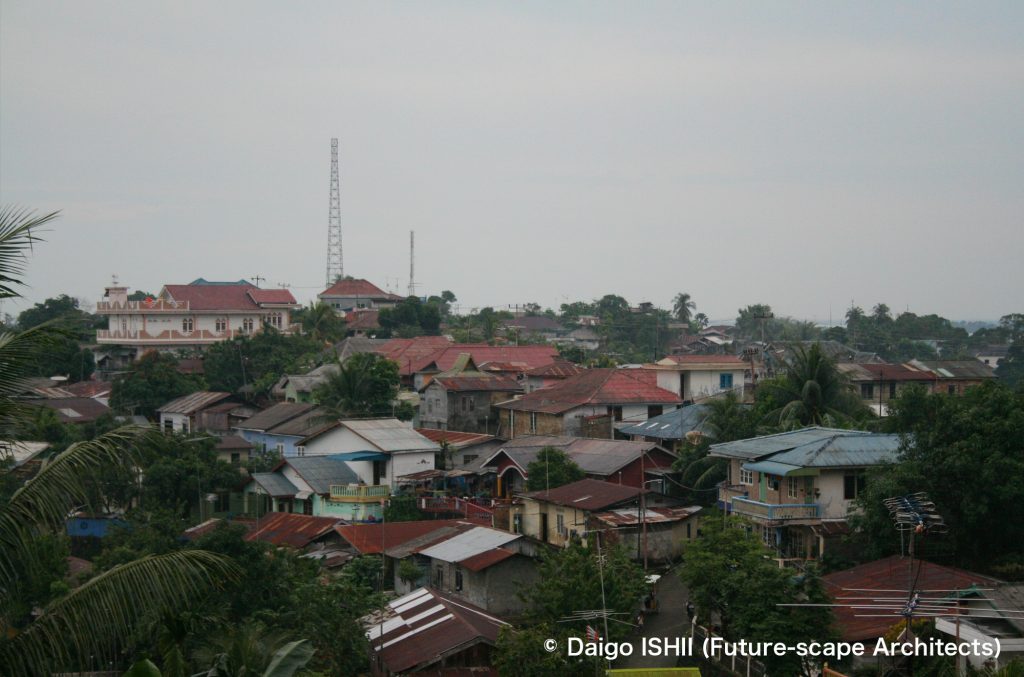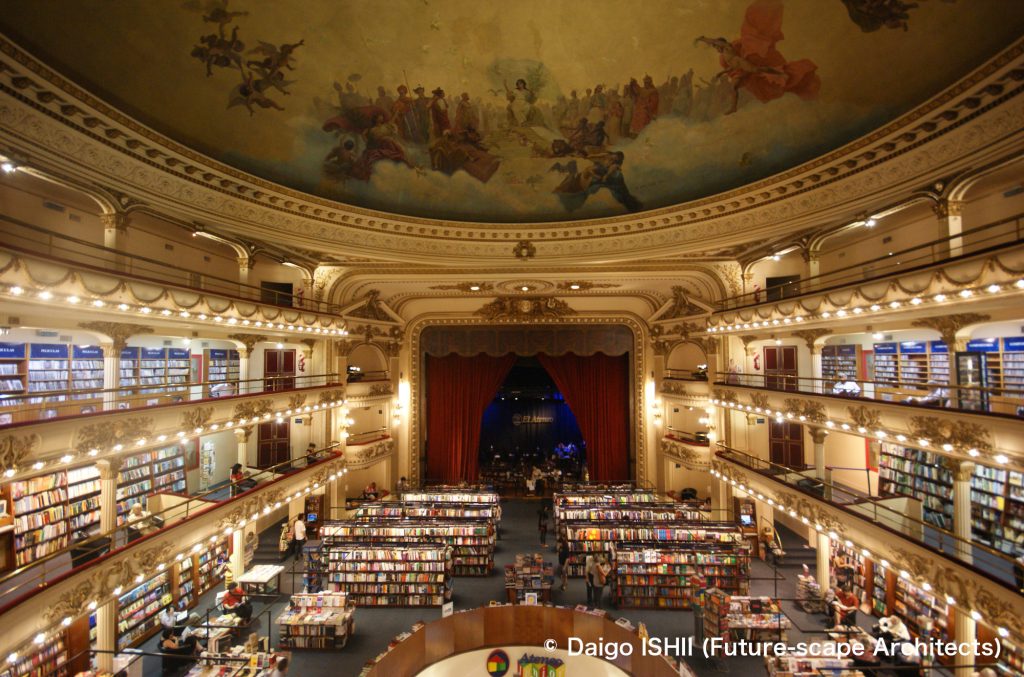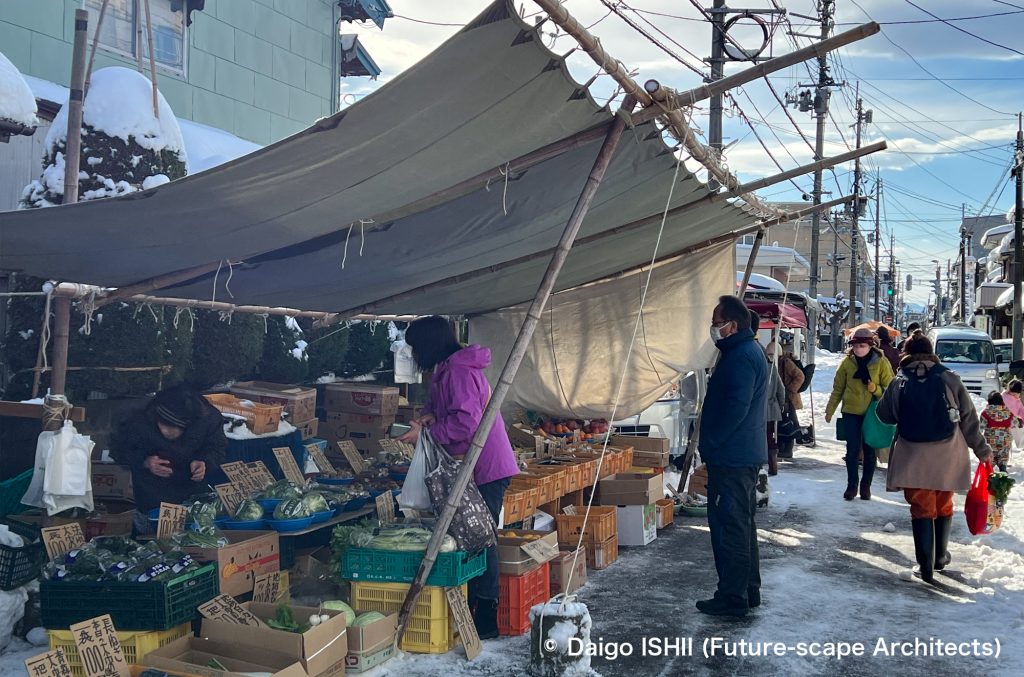アマゾン河沿いの建築の話。
The story about architectures in the Amazon river.
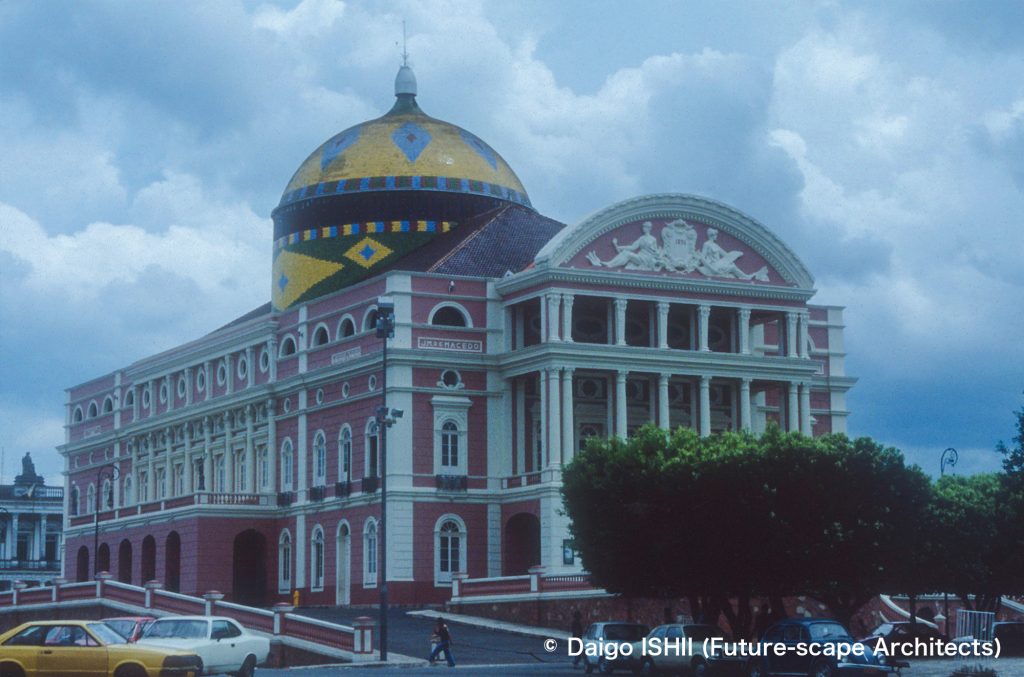
See the Amazonas theater in Manaus. On the neo-Renaissance architecture, a colorful tiled roof in the colors of the Brazilian flag was put.
https://goo.gl/maps/3UStzrHptwcebnmx5
ブラジルのベレン、マナウス、そして、ペルーのイキトスは、アマゾン開発の拠点となった街で、川沿いの都市の中では、この3都市に、質の高いコロニアル建築が集中しています。中でも、もっともアマゾンらしいコロニアル建築がマナウス中心部のアマゾナス劇場。ヨーロッパ由来のネオルネサンス建築が、ブラジルの国旗の色に貼り分けた、カラフルなタイル屋根を載せただけで、突然エキゾチックになります。構造材も仕上材も、ほとんどをヨーロッパから運んだのに、たった1箇所屋根を変えただけで、ブラジルに換骨奪胎された感じ。アマゾンにオペラハウスをつくる映画「フィッツカラルド」の撮影は、上流のイキトスで行われましたが、映画に描かれた、山を越えなければ資材を運べないような大きな町は、実際のアマゾン河沿いにはありません。
ペルーのイキトス中心街に残るのは、カラフルなタイルで外壁が覆われたコロニアル建築の数々。これは、ポルトガルの伝統建築の流れ。スペイン支配下のイキトスには陸路はないため、川が唯一の交通路でした。川下のポルトガル支配下の文化が、イキトスまで届き、政治的支配とは異なる、川のつくる文化的つながりが、建築から見え、おもしろい。
河口の都市ベレンからイキトスまで3700キロの距離で、水面の標高差は100m。それに対して、河岸段丘の上にある都市中心部と河辺の間には、かなりの高低差があります。イキトスの河辺に広がるのは、中心街とはまったく違う、アマゾンの元々の姿に近い風景でした。水位の季節変化に対応する、高床式の藁葺き住居が並んでいます。アマゾン河では、3700キロの距離がつくる違いより、都市内の高低差がつくる建築の違いの方が大きいようでした。
マナウス対岸のカレイロの河辺に点在する、ボートや筏の上に載る家。水位の季節変化に合わせて、エレベーターのように高さを変える建築は、河辺の世界と河岸段丘の世界を行き来する可能性の建築。
Belém and Manaus in Brazil, and Iquitos in Peru, were the centers of Amazon development. Colonial architecture concentrated most in these three cities among the riverside cities. The most Amazonian colonial architecture was the Amazonas Theater in Downtown Manaus. The neo-Renaissance architecture of European origin suddenly became exotic only by a colorful tiled roof with the colors of the Brazilian flag. Most of the structural and finishing materials were transported from Europe. Nonetheless, with the just difference of the roof, it had become Brazil. The movie "Fitzcarraldo," in which the protagonist built an opera house in the Amazon, was filmed upstream in Iquitos. The large towns depicted in the movies, where materials cannot be transported without crossing mountains, are not actually located along the Amazon River.
In the center of Iquitos, Peru, there were many colonial buildings which outer walls were covered with colorful tiles. It was the tradition of Portuguese architecture. Under Spanish rule, Iquitos had no roads, so the Amazon river was the only means of transportation. The culture in Portuguese-ruled downstream reached as far as Iquitos. The cultural connection created by the river, which was different from political control, could be seen in the architecture. That was interesting.
The distance from the estuary city of Belem to Iquitos was 3,700 km, and the height difference in the water surface among both cities was 100 m. On the other hand, there was a considerable height difference between the downtown on the river terrace and the riverside. The scenery that spread out along the riverside of Iquitos was absolutely different from the downtown and was close to the original landscape of the Amazon. There were rows of houses with thatched roofs on stilts, in consideration of seasonal changes in water level. In the Amazon River, the difference in architecture generated by the height difference within the town seemed to be greater than the difference generated by the distance of 3,700 kilometers.
Houses on boats and rafts were scattered along the riverside of Careiro on the opposite bank of Manaus. Those changed the height like an elevator according to the seasonal changes in water level. Architecture with the possibility of going up and down between the riverside and the river terrace appeared.
マナウスのアマゾナス劇場 / Amazonas Theater in Manaus
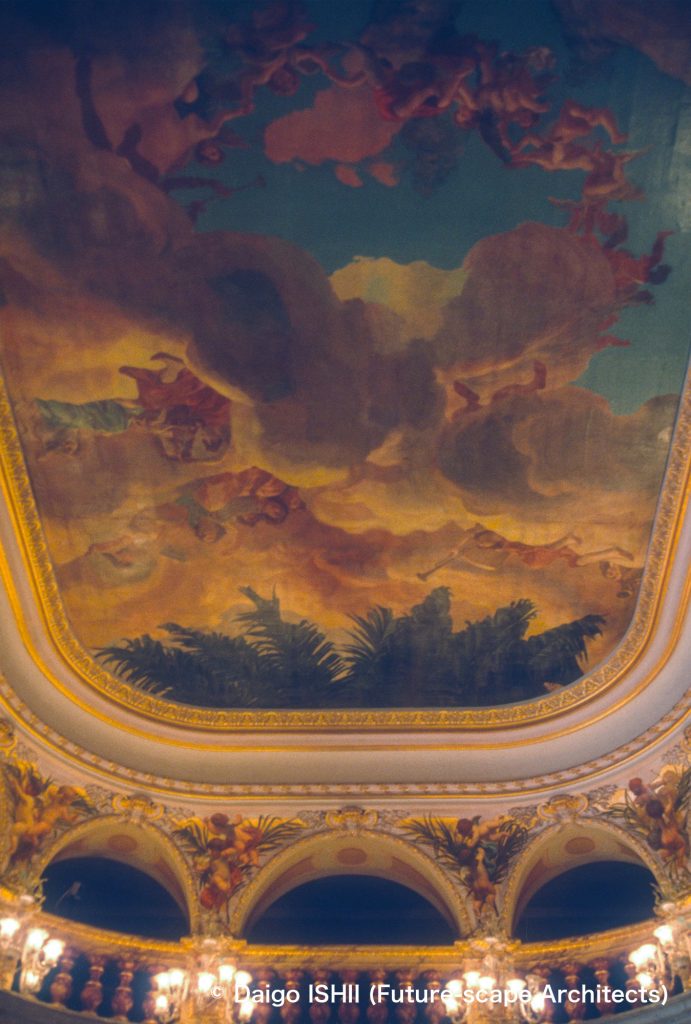
See the ceiling of the hall of the Amazonas Theater. On the ceiling, a palm-like tree was painted, reinterpreting the Western European style in a locality of the tropical zone.
https://goo.gl/maps/3UStzrHptwcebnmx5
イキトスのコロニアル建築 / Colonial architecture in Iquitos
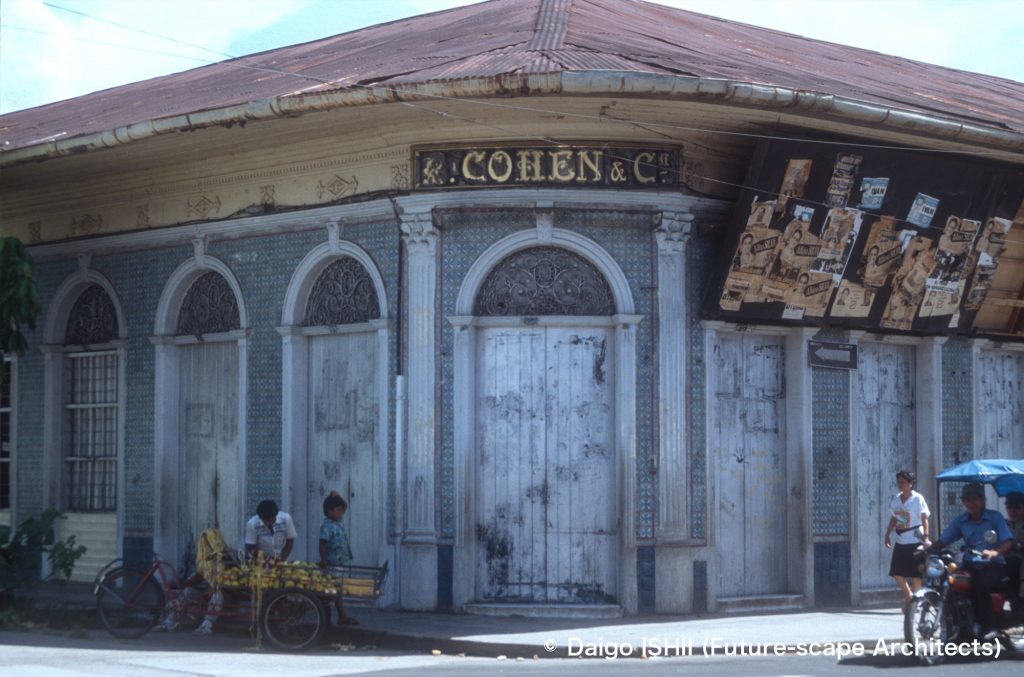
The colonial architectures with Portuguese style, which was covered with colorful tiles, remained in Iquitos.
https://goo.gl/maps/nXf3YPDpmFk5dekm8
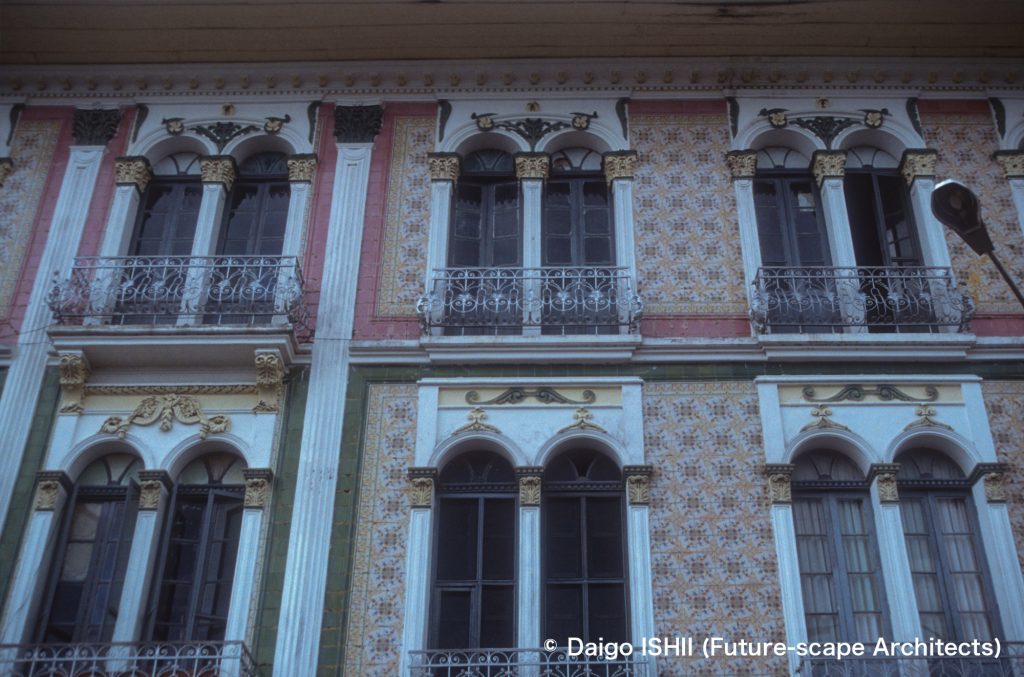
The colonial architectures with Portuguese style, which was covered with colorful tiles, remained in Iquitos.
https://goo.gl/maps/nXf3YPDpmFk5dekm8
マナウスのアドウフォ・リスボン市場 / Adolfo Lisboa Market in Manaus
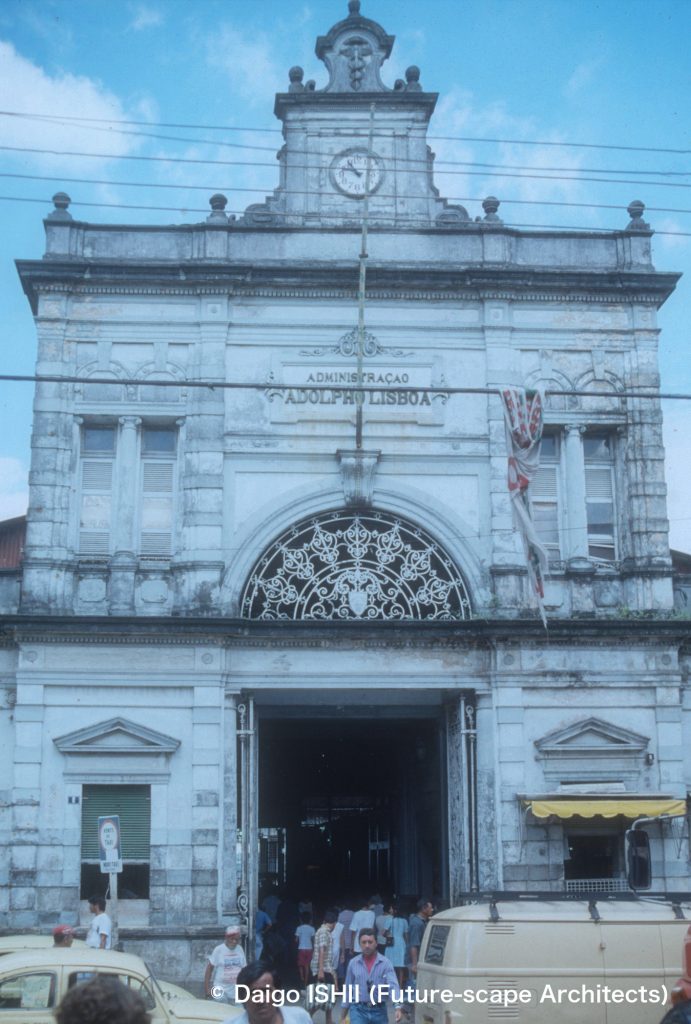
See the Adolfo Lisboa Market designed by Gustave Eiffel, who designed the Eiffel Tower.
https://goo.gl/maps/B8jLU1k8FjCorrQZ9

See the interior of the Adolfo Lisboa Market designed by Gustave Eiffel, who designed the Eiffel Tower.
https://goo.gl/maps/B8jLU1k8FjCorrQZ9
イキトスのベレン地区 / Saterfront in Manaus
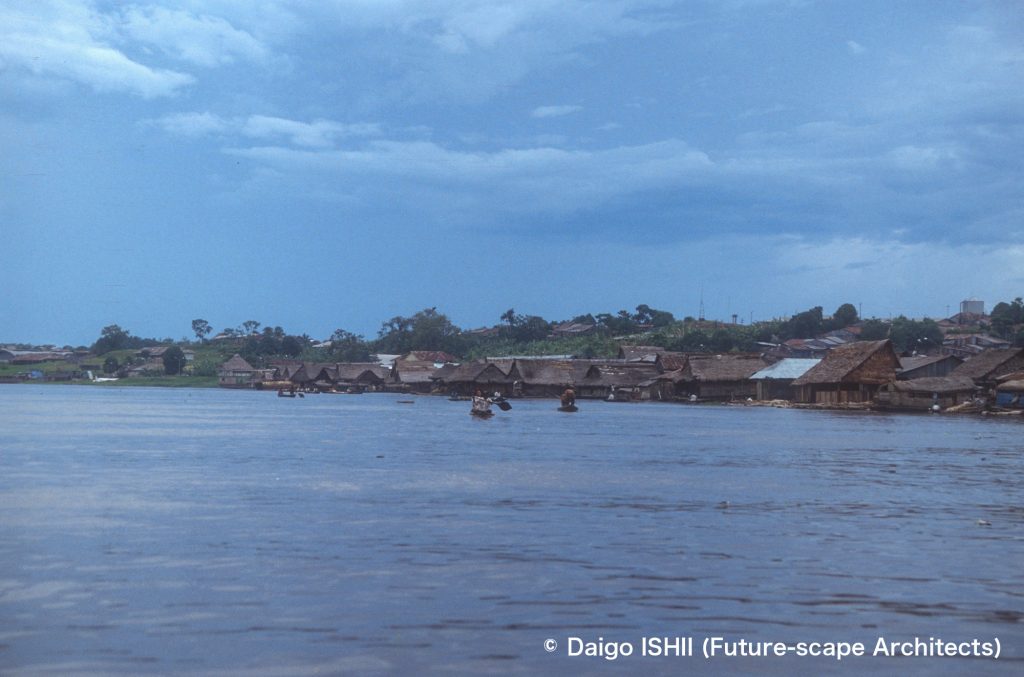
Belen district spread out on the waterfront of Iquitos. Buildings and houses standing on high ground could be seen faintly in the background.
https://goo.gl/maps/7rgSjBQvS4yM9VKj6
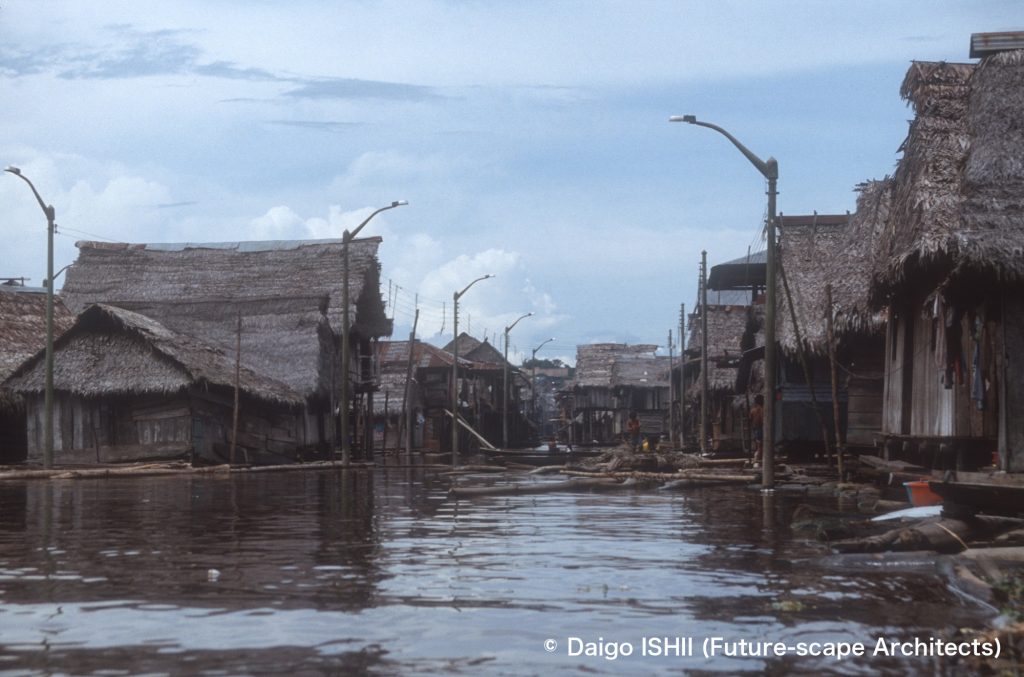
Belem district on the waterfront of Iquitos, in the 1990s, most of the houses had thatched roofs, but today many have changed to corrugated iron roofs.
https://goo.gl/maps/7rgSjBQvS4yM9VKj6

In Belen district, there are many houses on stilts to cope with rising water levels.
https://goo.gl/maps/7rgSjBQvS4yM9VKj6
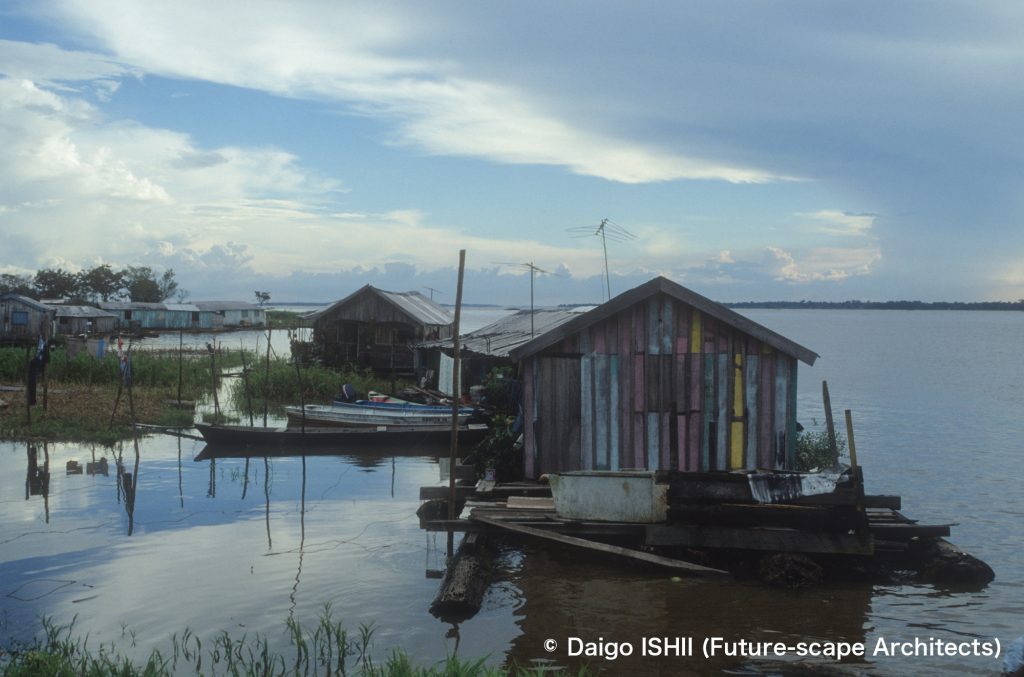
See the houses on boats and rafts in Careiro on the opposite bank of Manaus.
https://goo.gl/maps/HeXUyKy9wx7yendQ8
ご感想はこちらへ / Click here for your impressions
マナウス / Manaus
カレイロ / Careiro
イキトス / Iquitos
参考文献 / reference
Wikipedia
写真の無断使用、転用はご遠慮下さい。/ Please do not use or upload our photos without permission.




